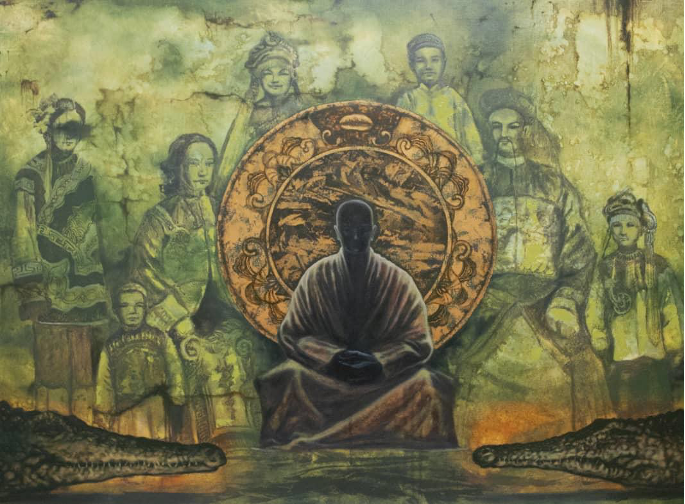Lined by small restaurants, shops, laundromats, cultural societies, medicinal establishments, and leisure and education clubs, Barrío Chino in Havana is perhaps the largest “Chinatown” in the Latin American world, with a history dating to the 19th Century. This is the locus where the earliest recorded presence of people practicing Buddhist customs in Cuba can be found. Dr. Douglas Calvo Gainza has already published widely on the spread of Buddhism in Cuba, including a penetrating reflection on the presence of Chinese Buddhism in the country: Los culíes y el abad. Una crónica-comentario sobre la más temprana y la actual presencia del budismo chino en Cuba.
Thanks to the work that BDE has compiled over two years’ worth of coverage, Dr. Gainza is working with the editor, Dr. Daniel Millet, to publish an upcoming 5-part series called “Albores.” Albores means dawn, and this series charts the dawn of the Mahayana traditions in Cuba and will cover the broad themes of origins, the Mahayana, Buddhism’s influence on art, Buddhism’s influence on literature and philosophy, and the present situation of Buddhist Studies and Cuban scholars. In the coming few highlights, we will take a brief glimpse at the four core factors that led to the growth of the Mahayana tradition in Cuba. They are as follows:
- As mentioned, the arrival of Chinese immigrants that bore backbreaking, laborious work in the late 19th Century,
- The visit of Ven. Zhihan to Cuba, who is at present the most prominent representative of Chinese Buddhism in this country,
- The growth of various Mahayana schools and the establishment of dojos across Cuba,
- Finally, the presence of Japanese Zen and the long-term goal to build a major Zen practice center.
We will come to the latter three in future posts. In the early days, the initial traces of Mahayana in Cuba were those of the Chinese expression. The Han coolies arriving to Cuba from 1847–77 came in waves that reflected the chaos of the Late Qing era. They were joined by Chinese workers from California, who had gone to the US as part of the Gold Rush but were seeking respite from growing American xenophobia. At first, the Chinese communities kept to themselves, but eventually, social interaction and integration into the Cuban population resulted in many marriages of Chinese men to black or mulatto women, most of whom were of Catholic or Afro-Cuban religious heritage. This meant that whatever vague or tangential connection they had to Buddhist spirituality or culture was gradually lost.
Furthermore, in the 19th Century, Cuba was a Spanish colony that recognized Catholicism as the sole state-supported religion. In the immigration and legal documents of the time, Chinese arrivals essentially ignored the section of “religion,” leaving blank spaces that still remain in historical documents (such as model contracts for coolies, passenger lists, settler censuses, and so on). Coupled with a lack of active evangelization of the Chinese population, language and cultural barriers (particularly with differing worldviews and religious backgrounds), and the deeply unequal and brutal work conditions imposed on the Chinese workers, and the statistics of the era’s Buddhist populace remain predictably lacking and unreliable.
Fast forward an entire century, and there would be little progress made in the name of Chinese Buddhism. This would change with the very recent visit of Ven. Zhihan. Born in Taipei but raised and educated in Vancouver, Ven. Zhihan became a monk in Taiwan in 1993. In 2006 he began nurturing a strong karmic affinity with the Latin American cultural sphere, giving Dharma talks, meditation classes, and lectures in Paraguay, Brazil, and Argentina. His visit to Cuba was the spark that would re-ignite the weak embers of Chinese Buddhism in Cuba. These flickering cinders of a Chinese Buddhist revival form the focus of our next post.


